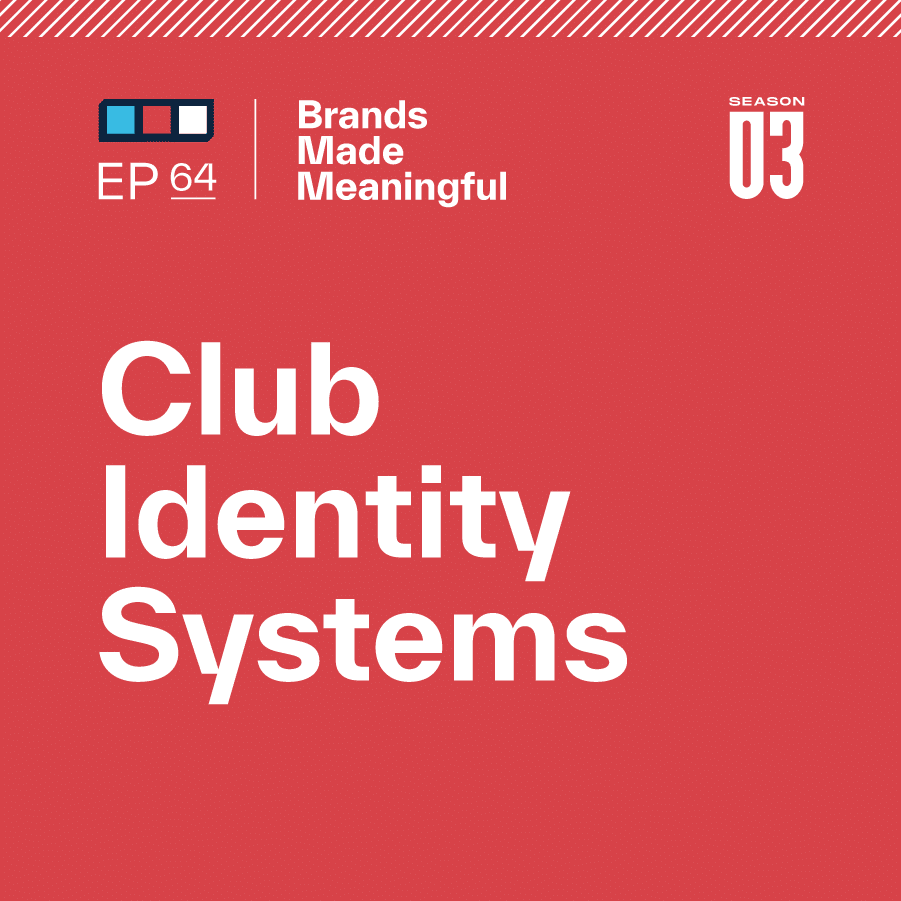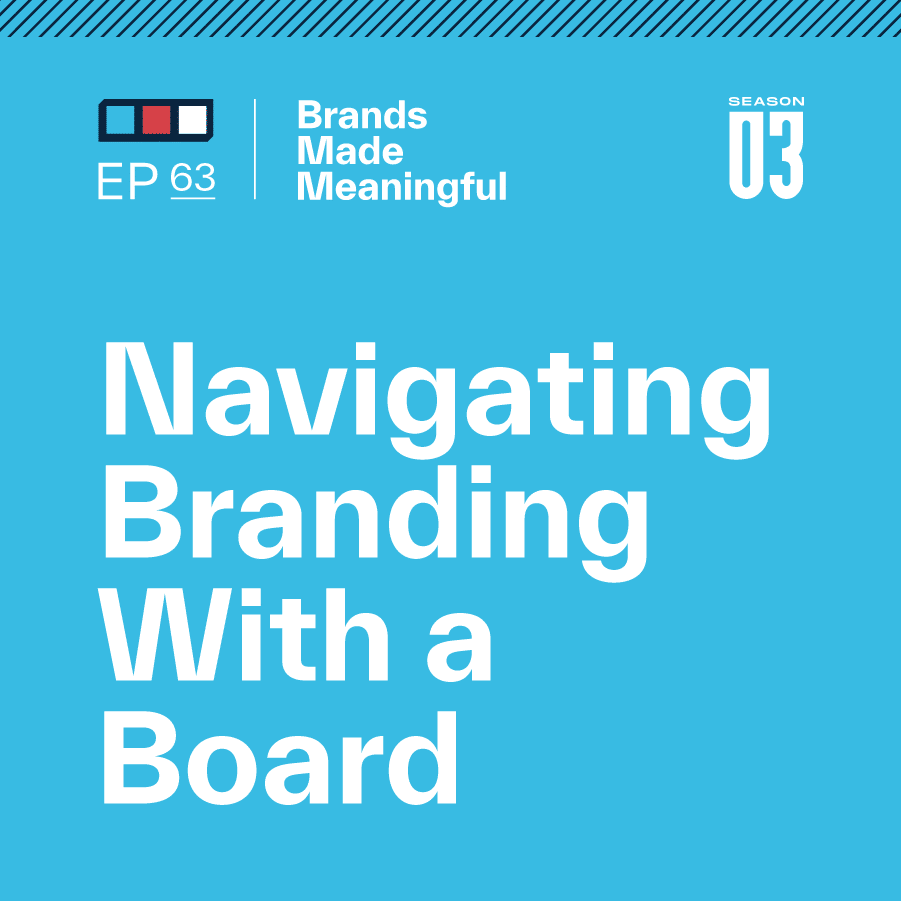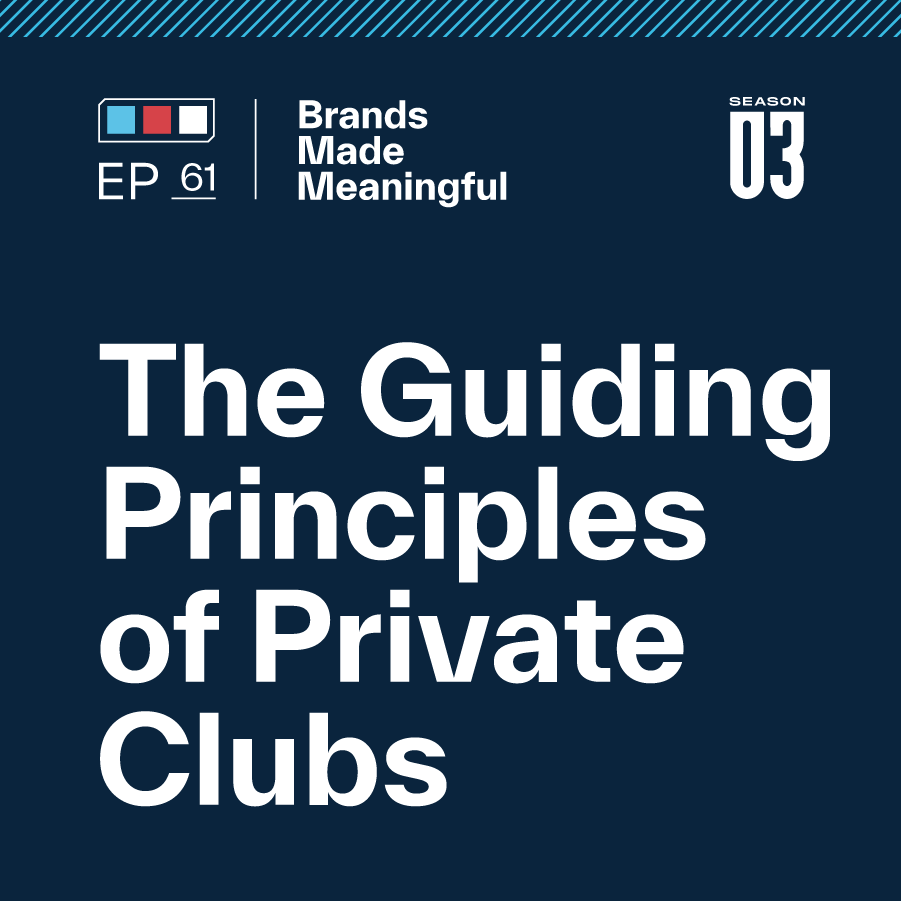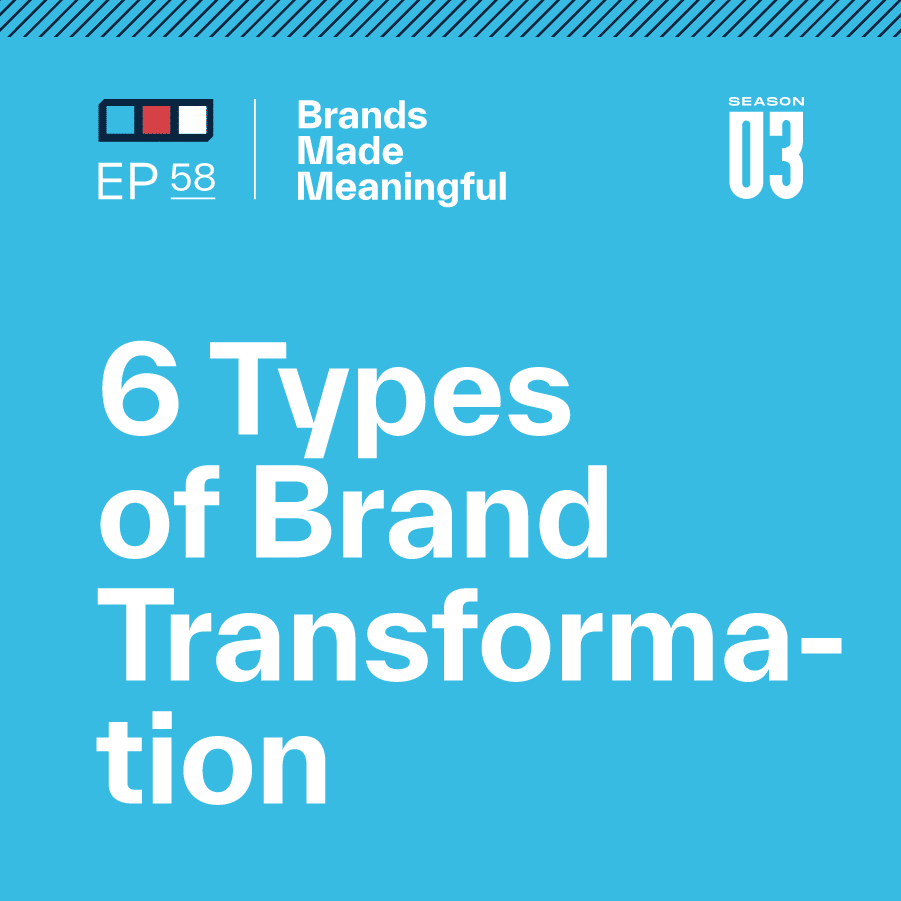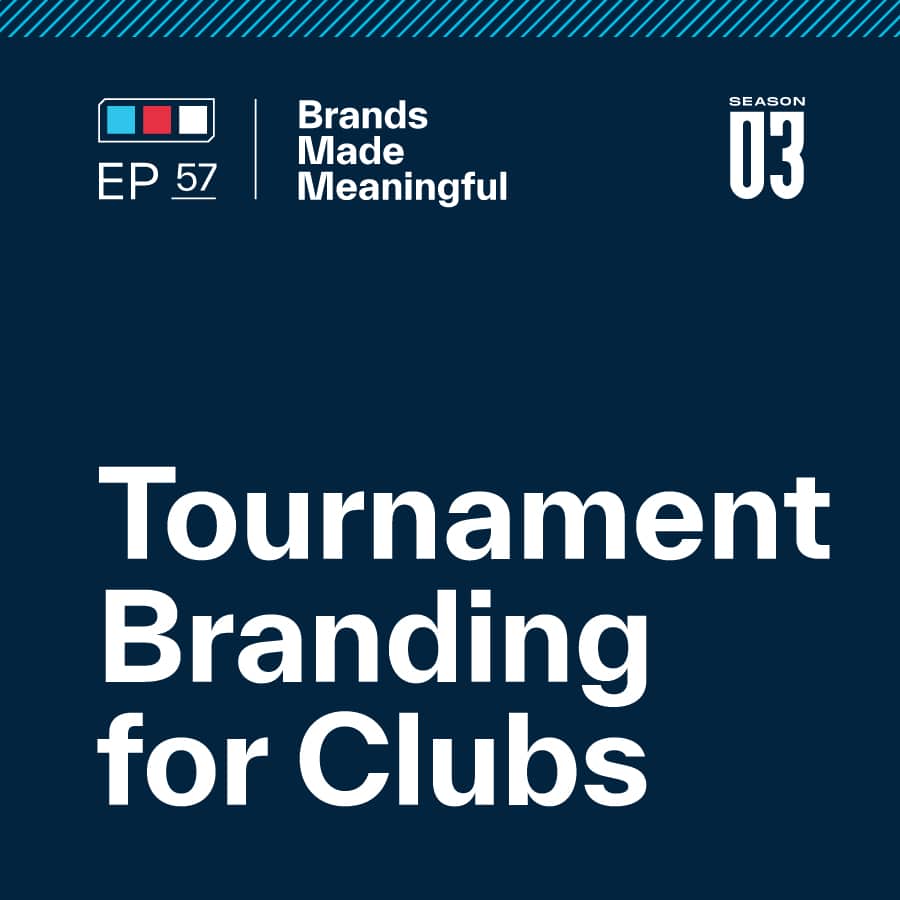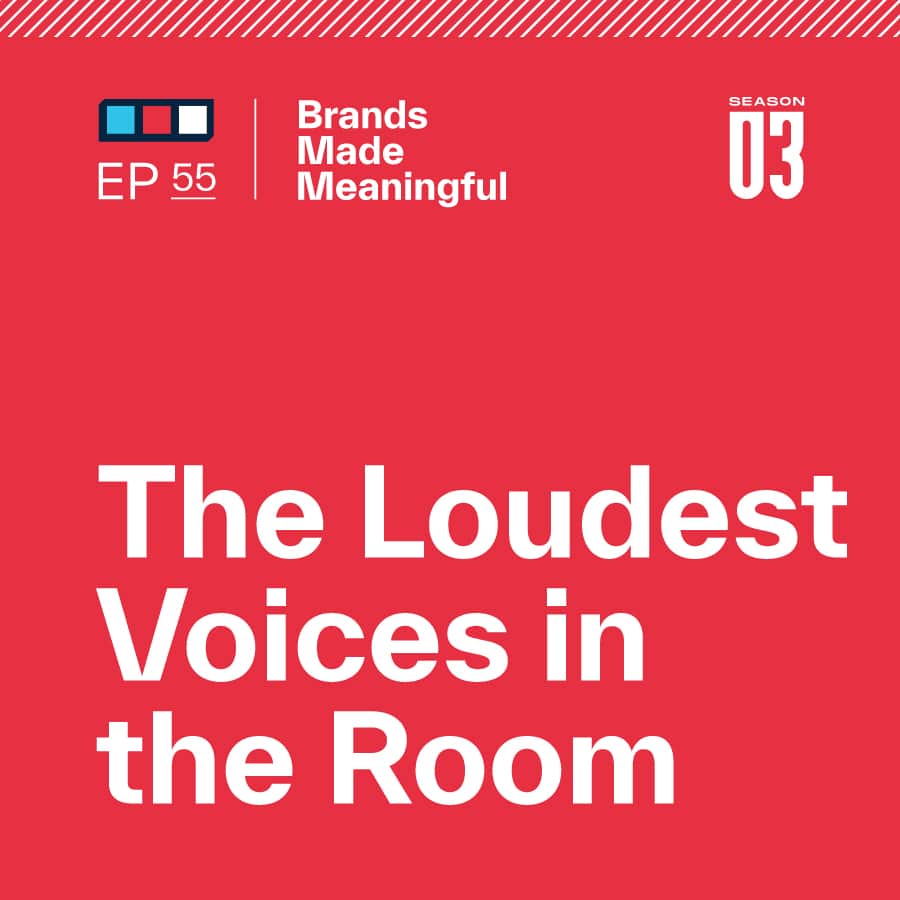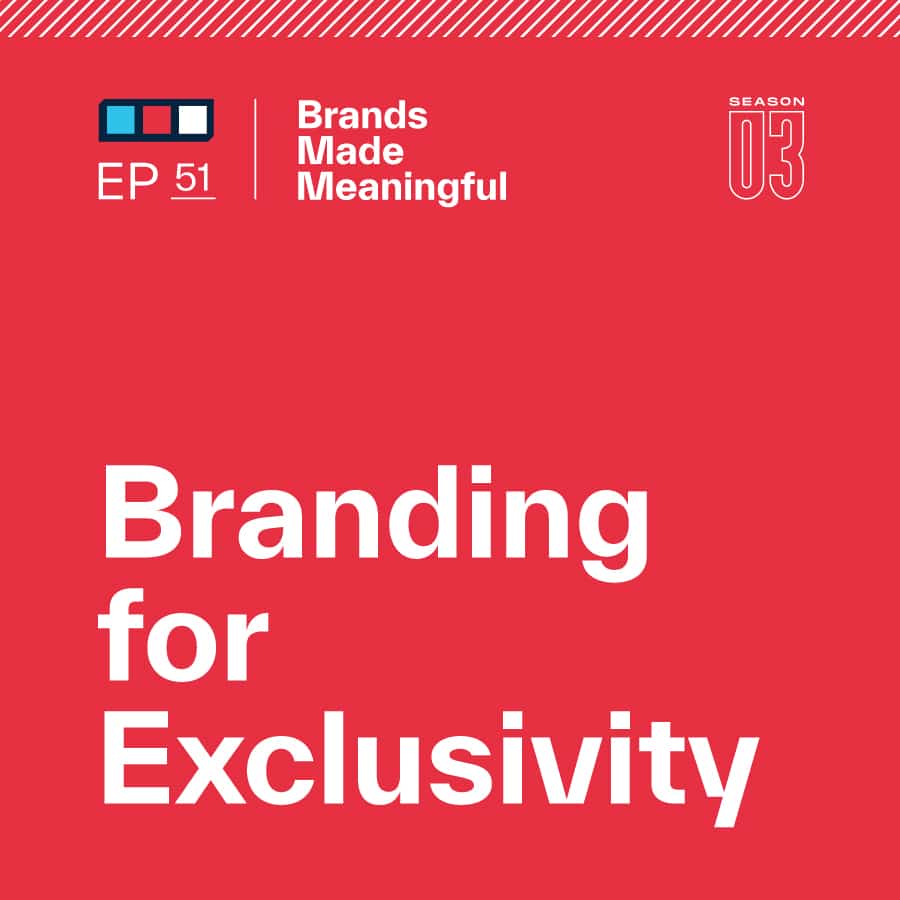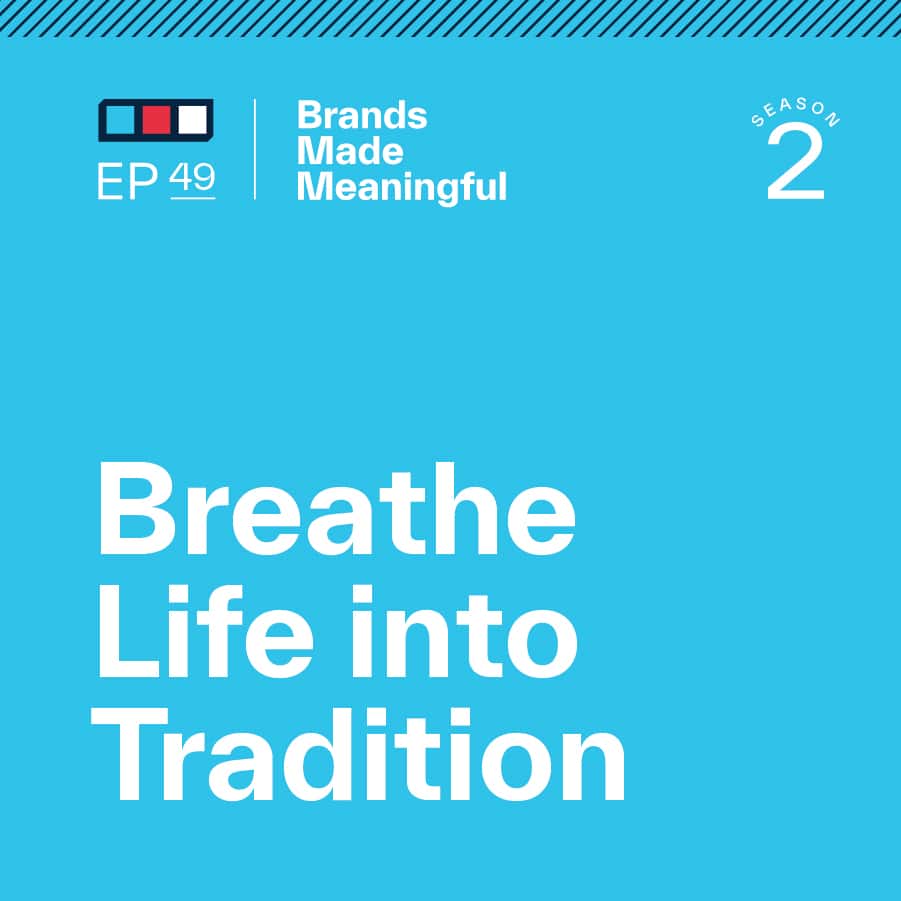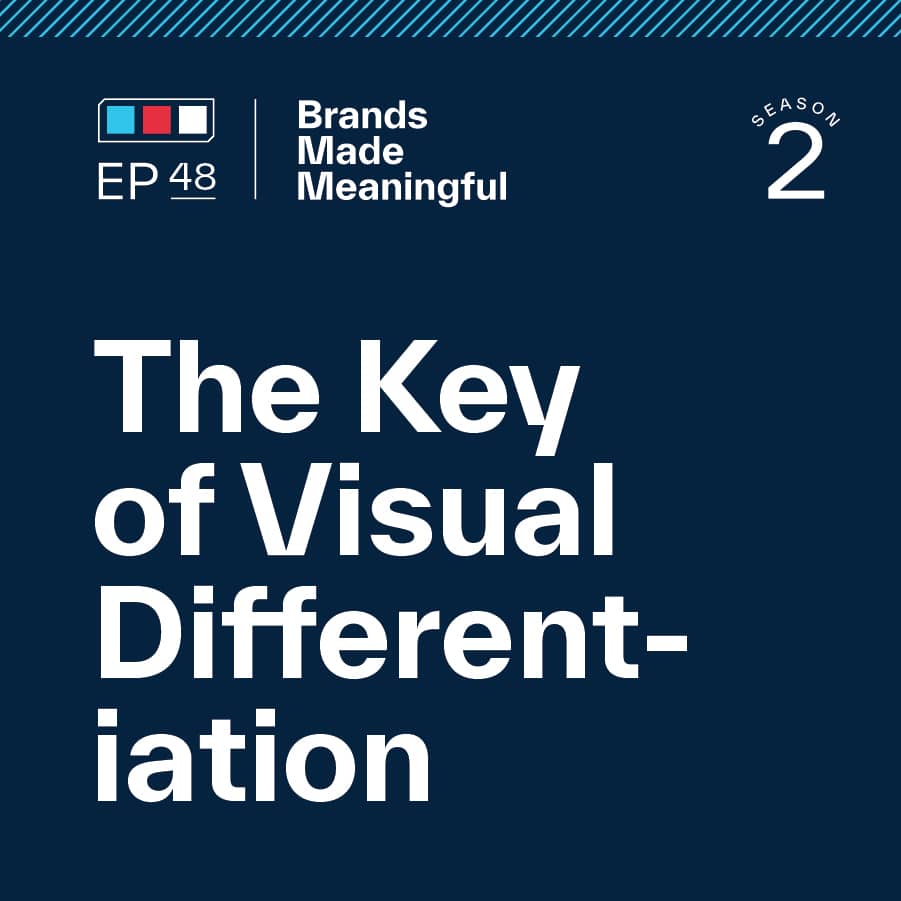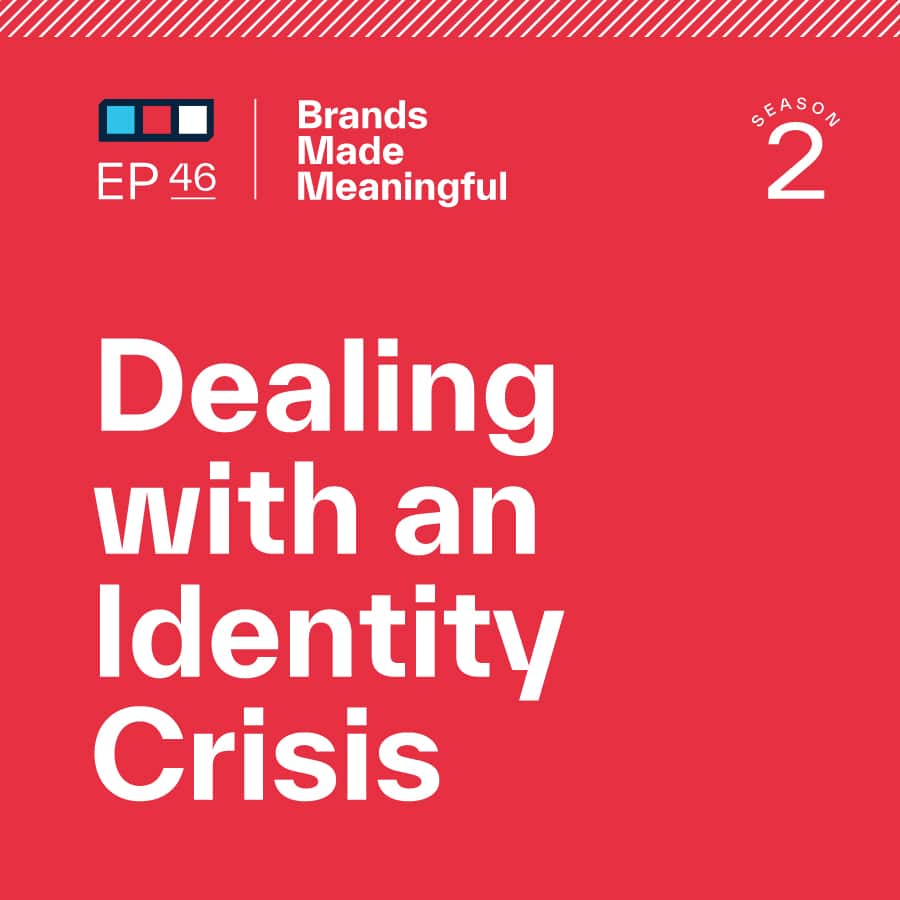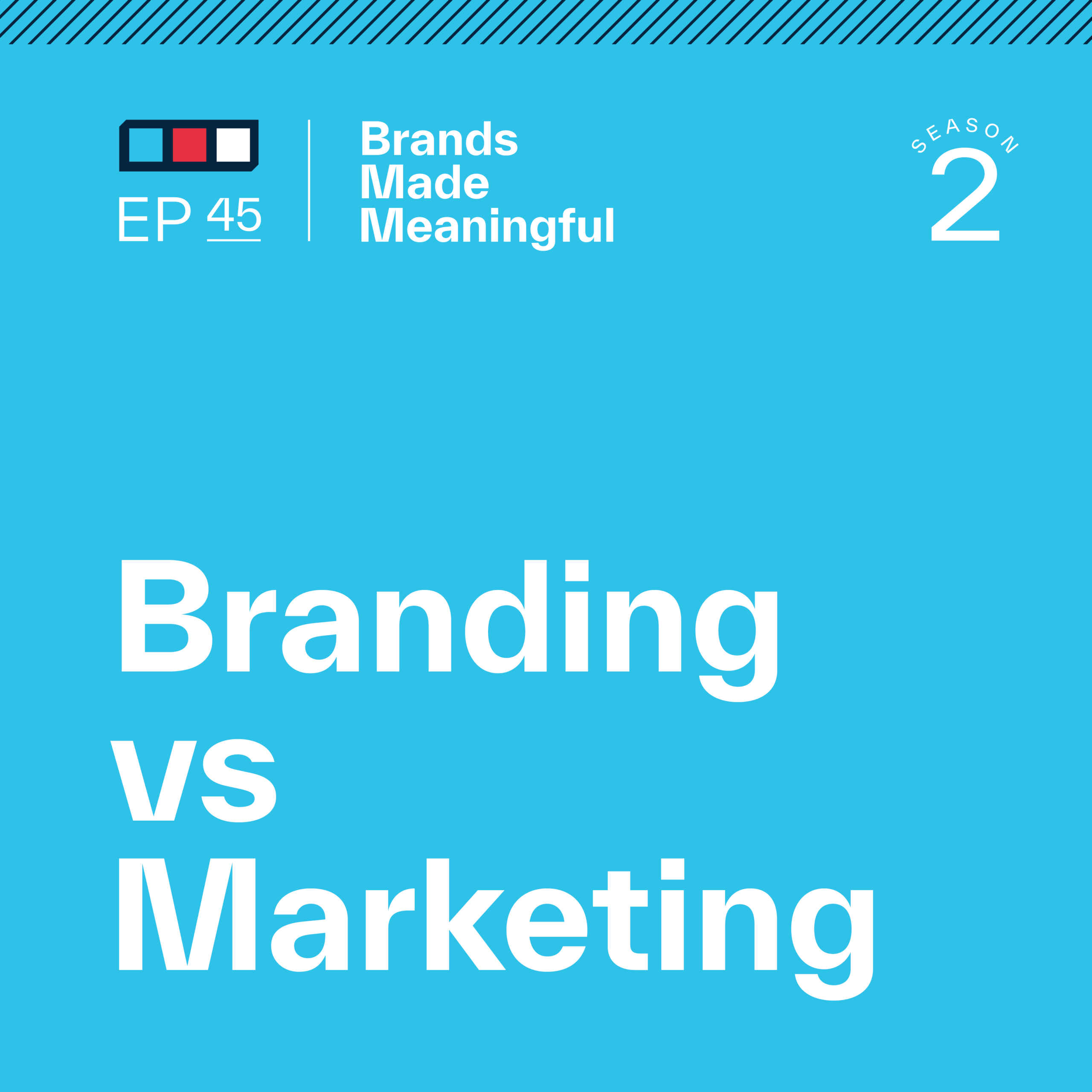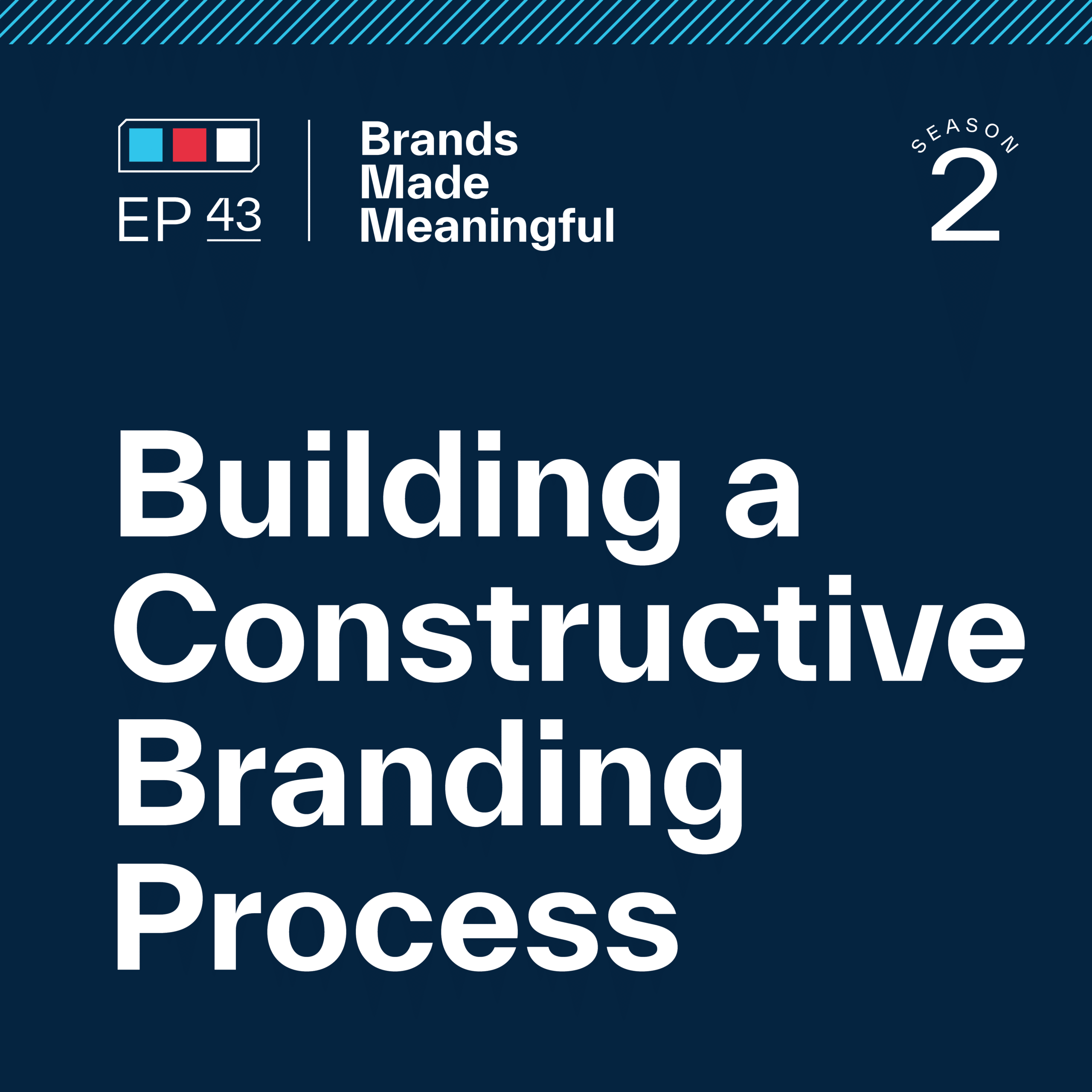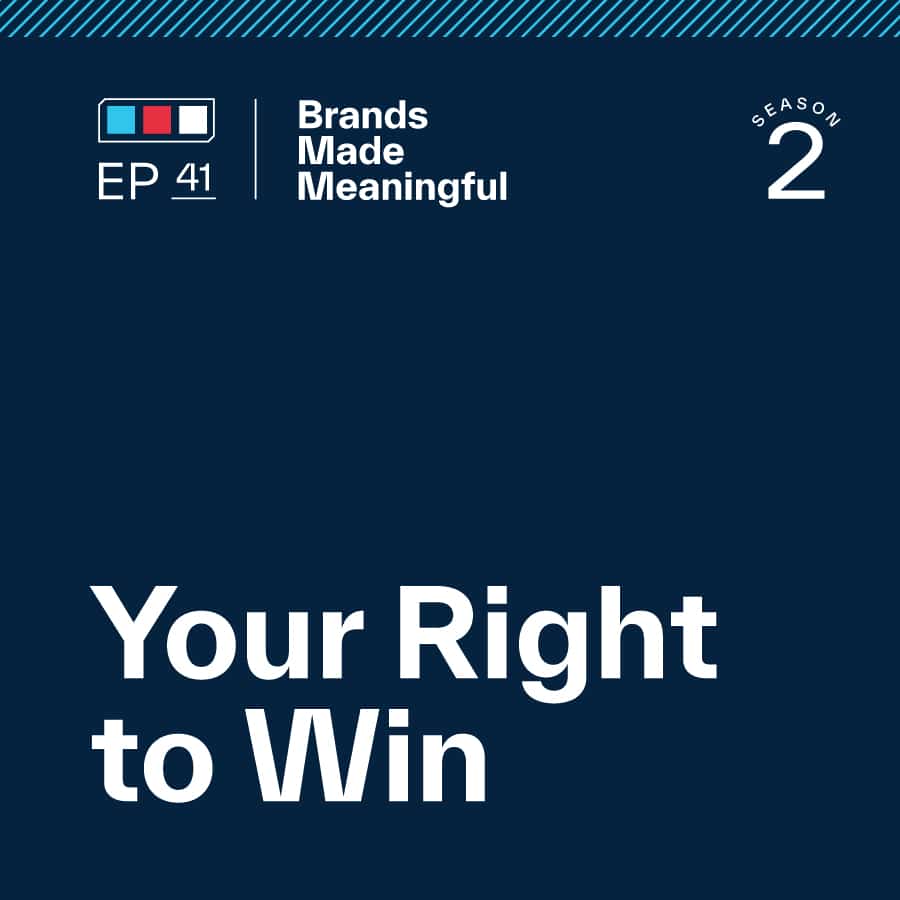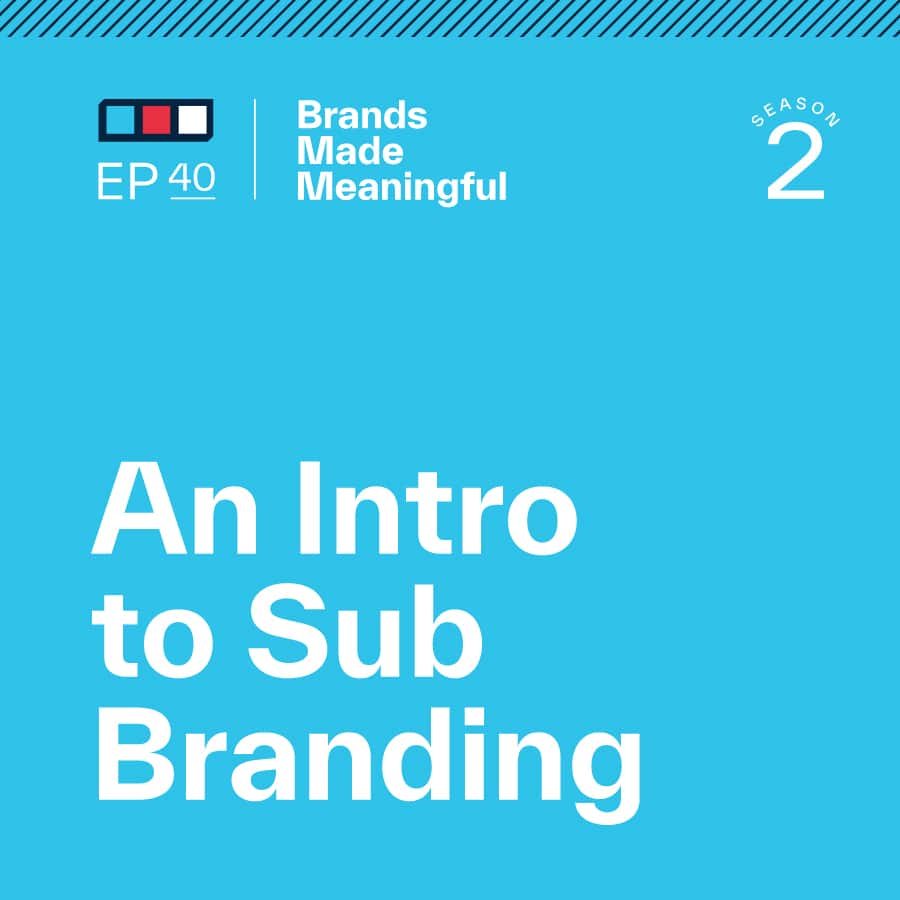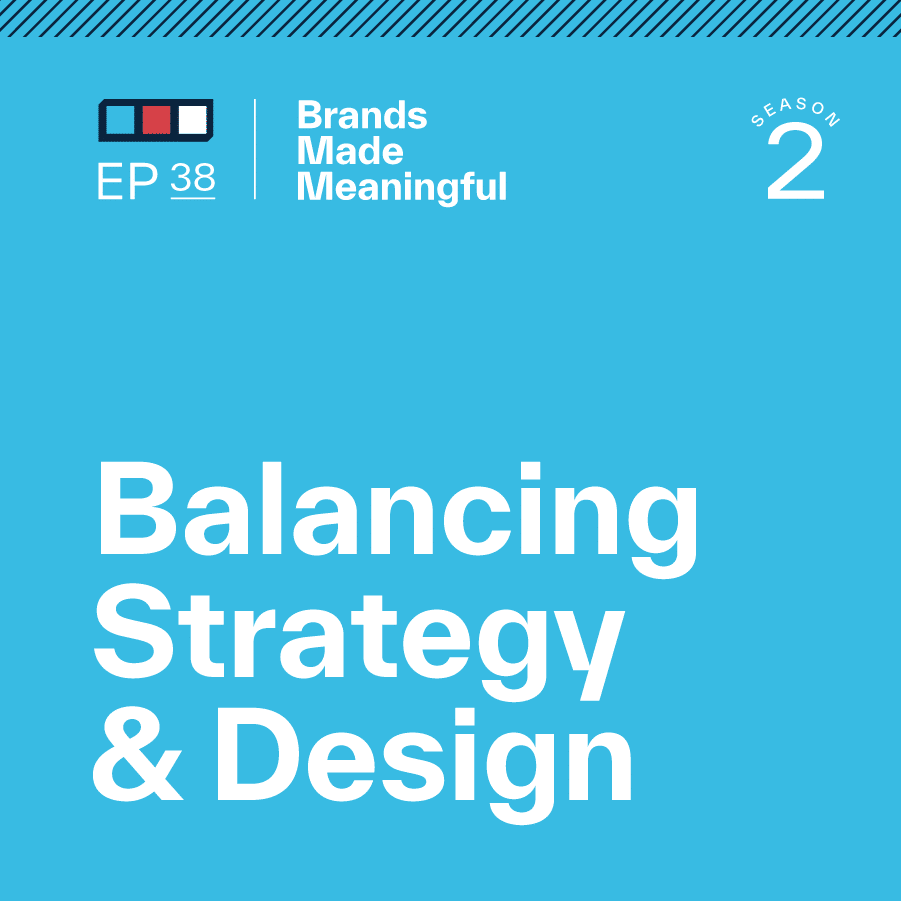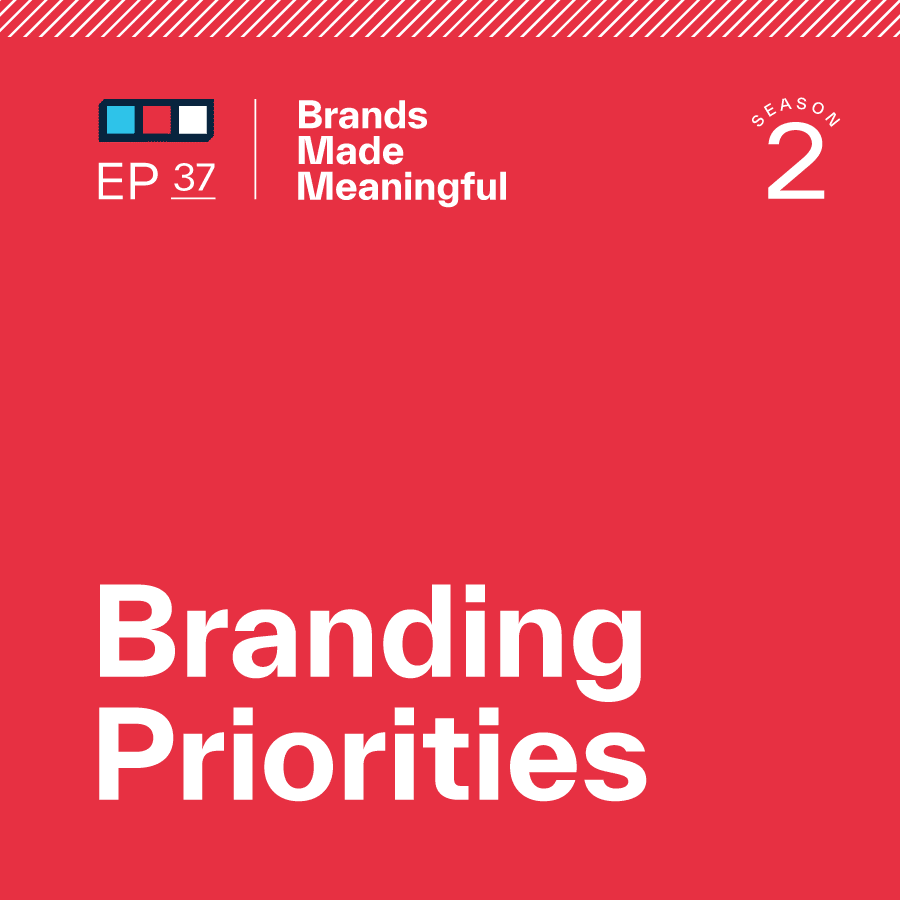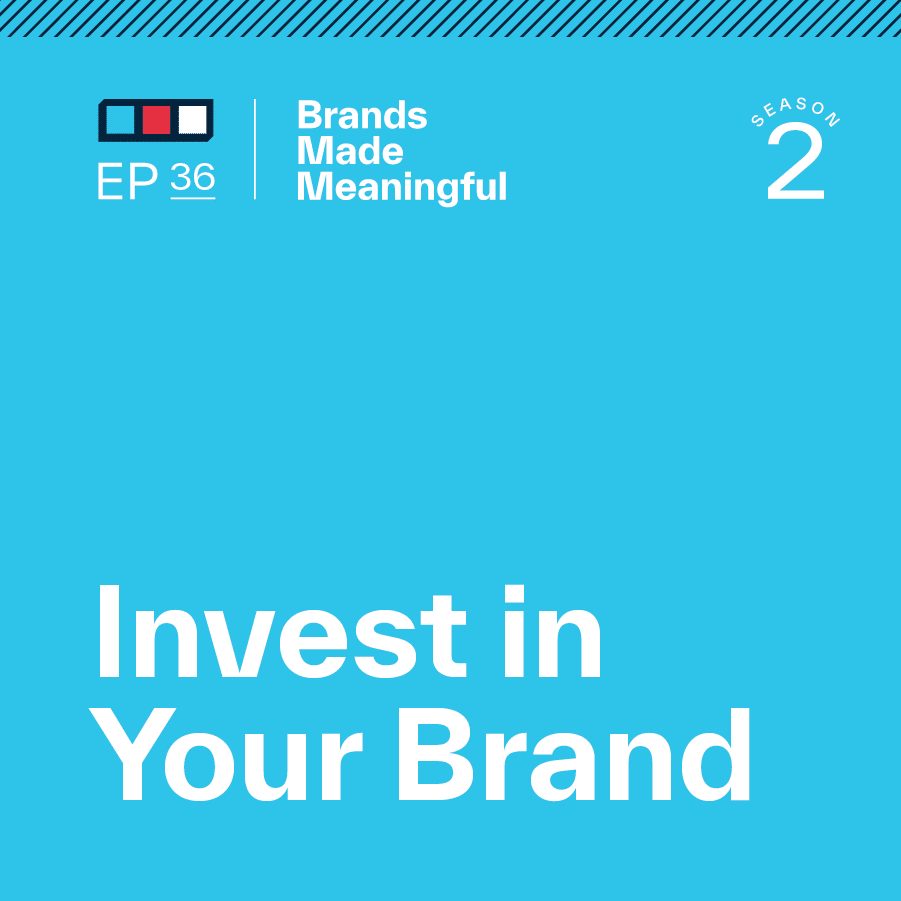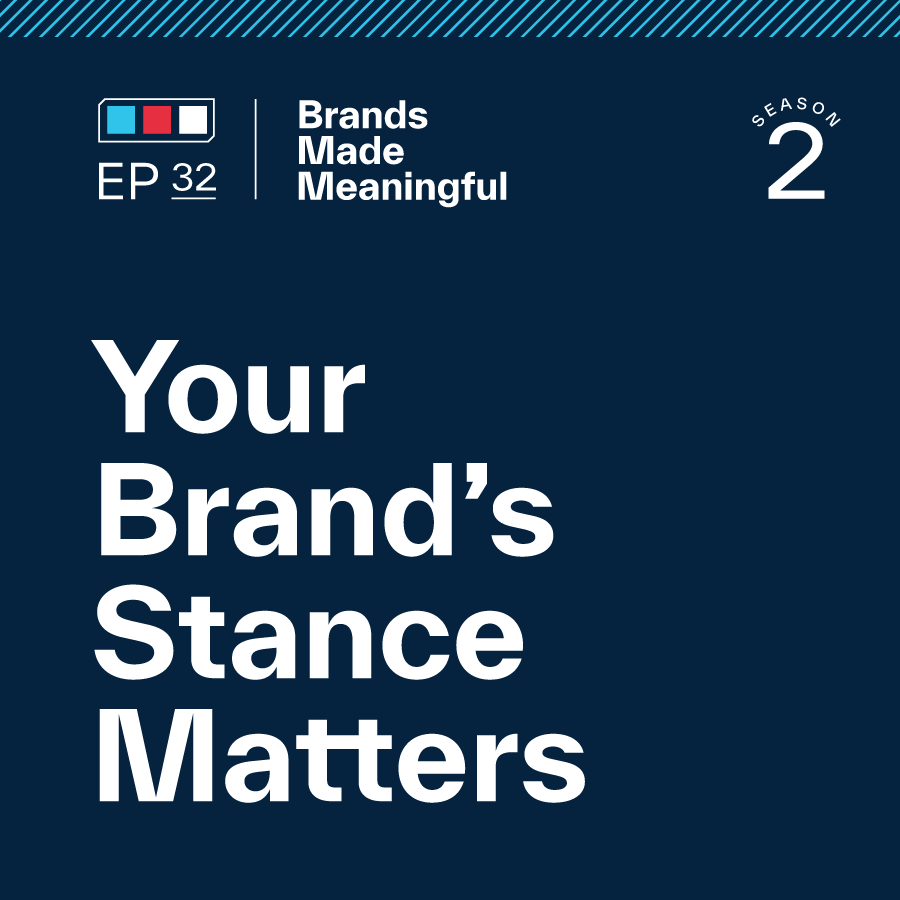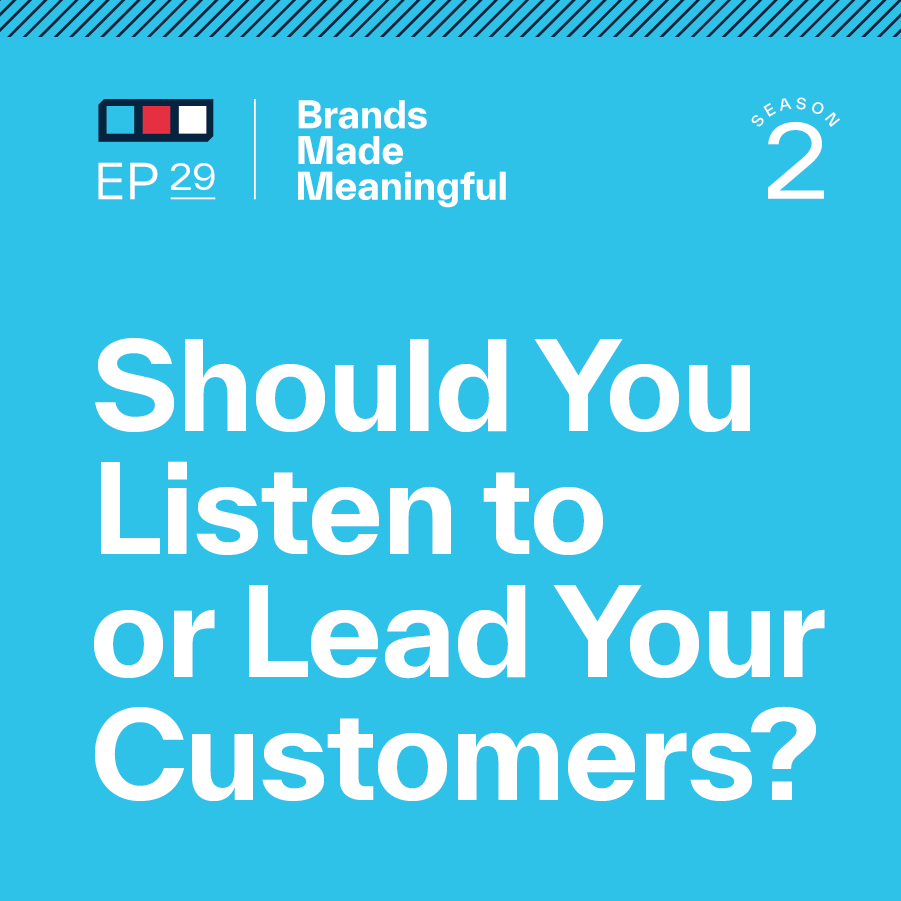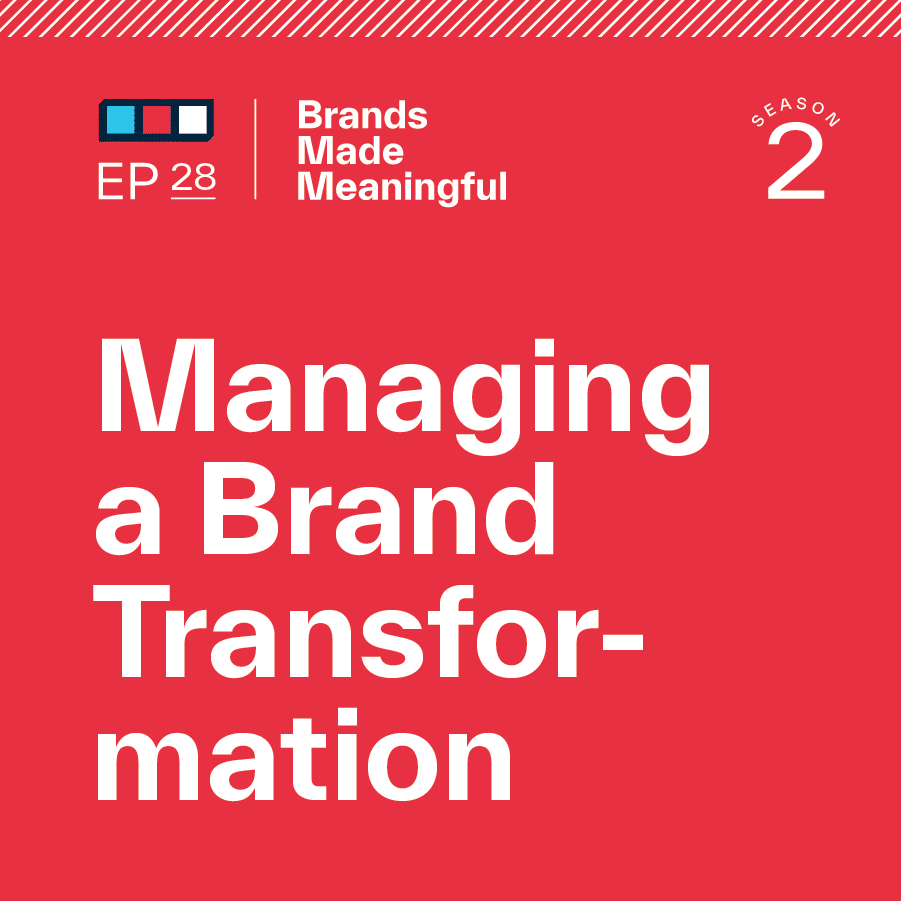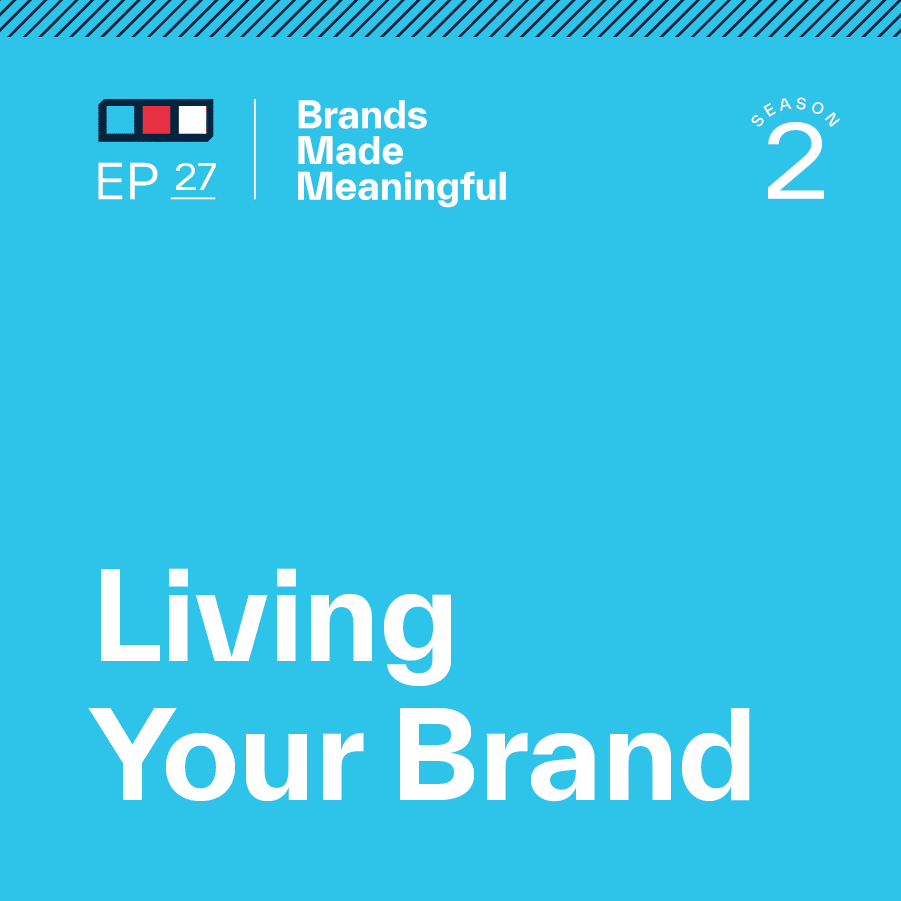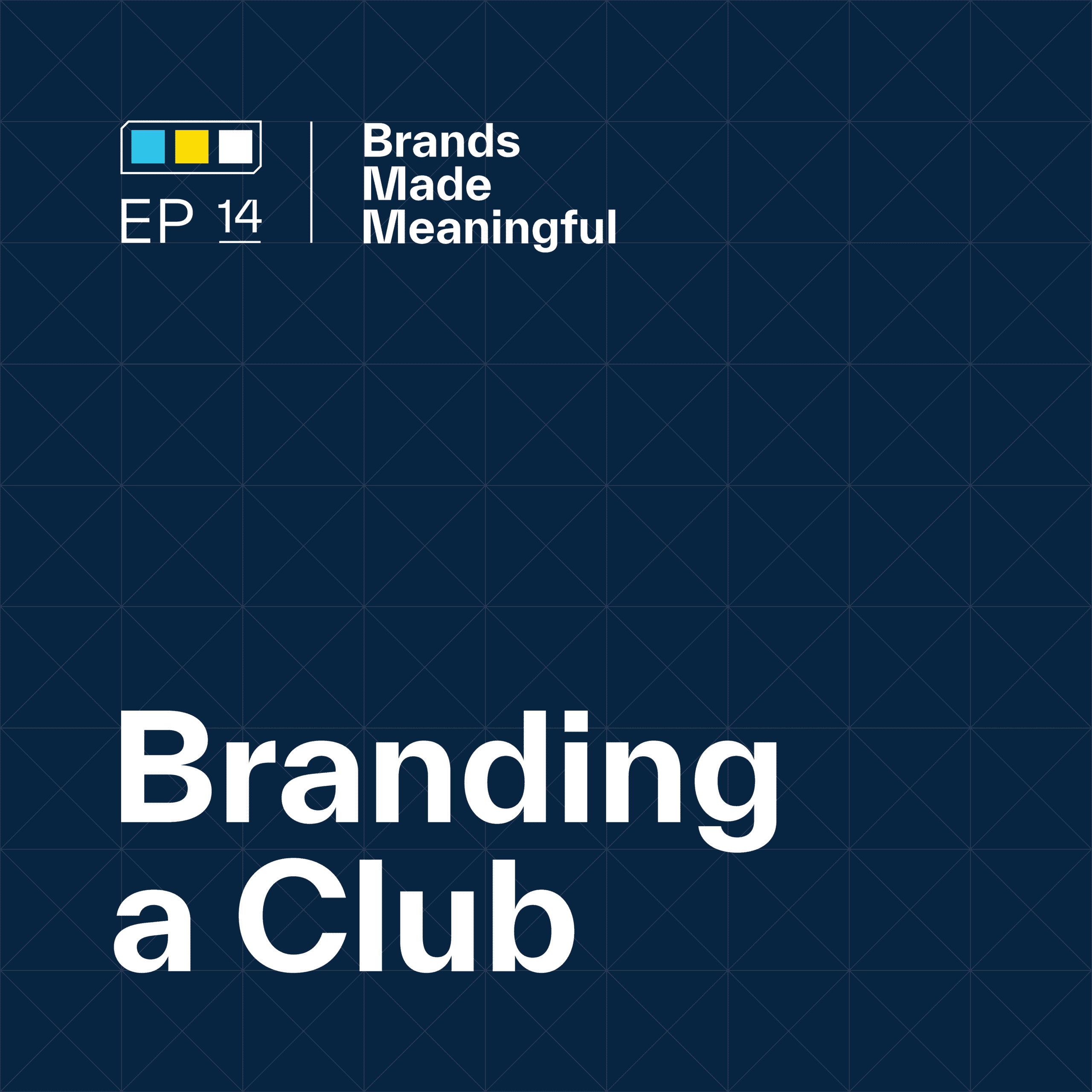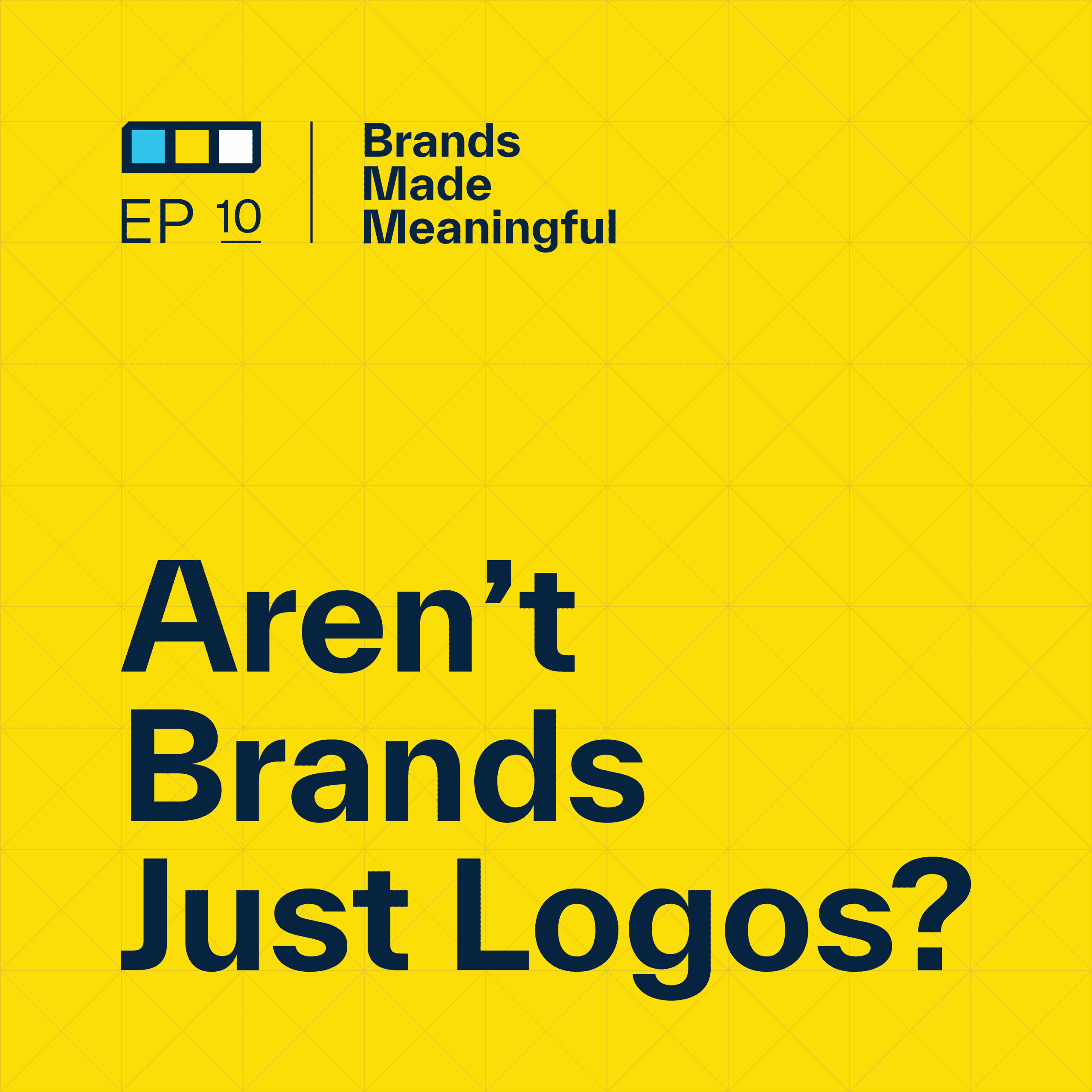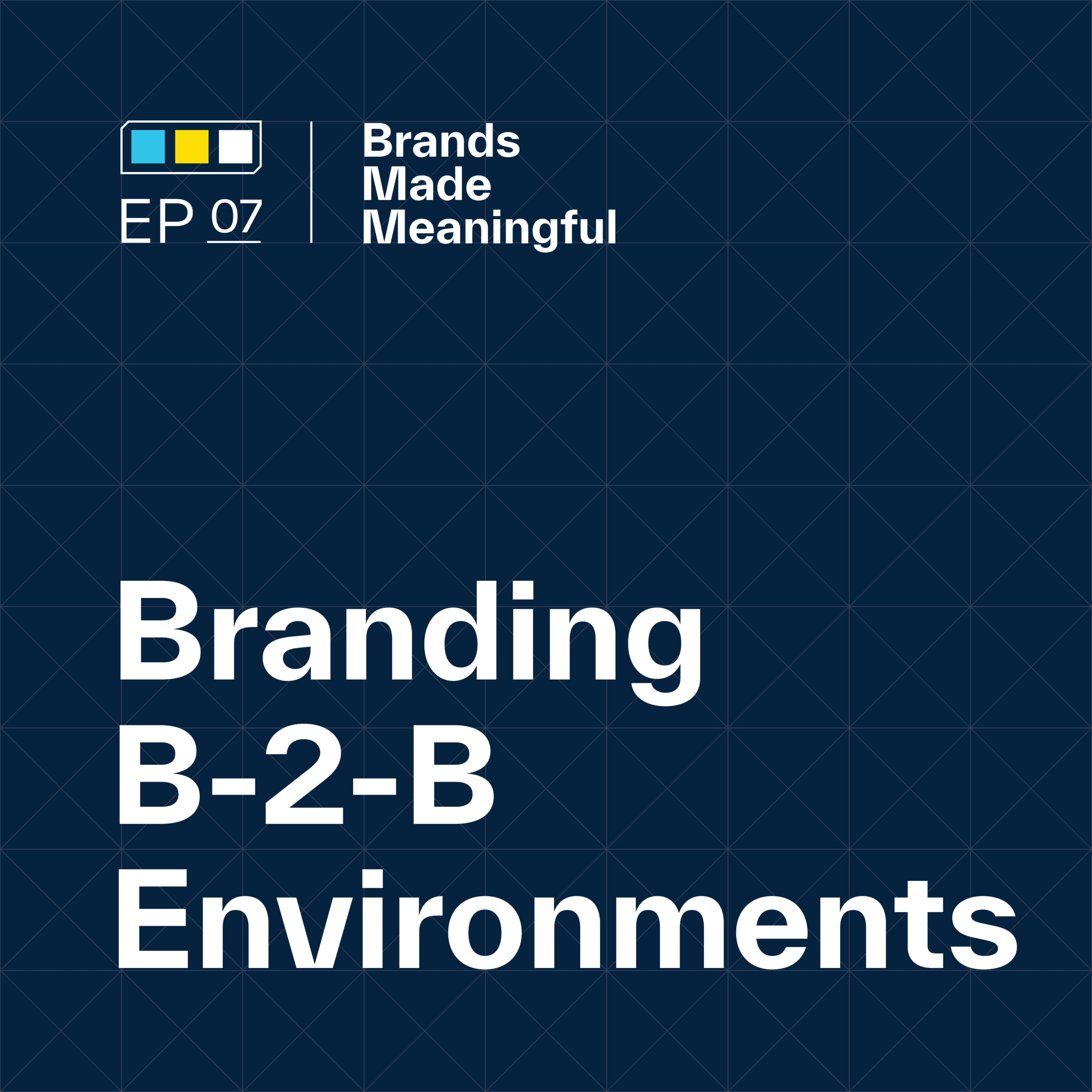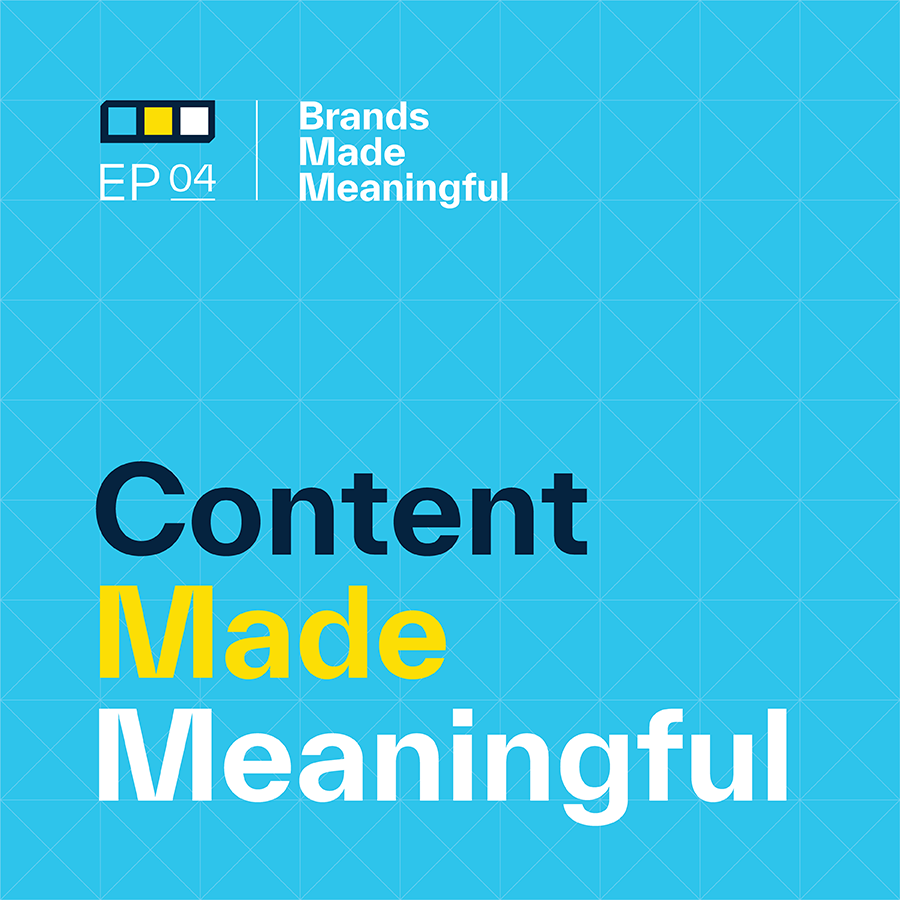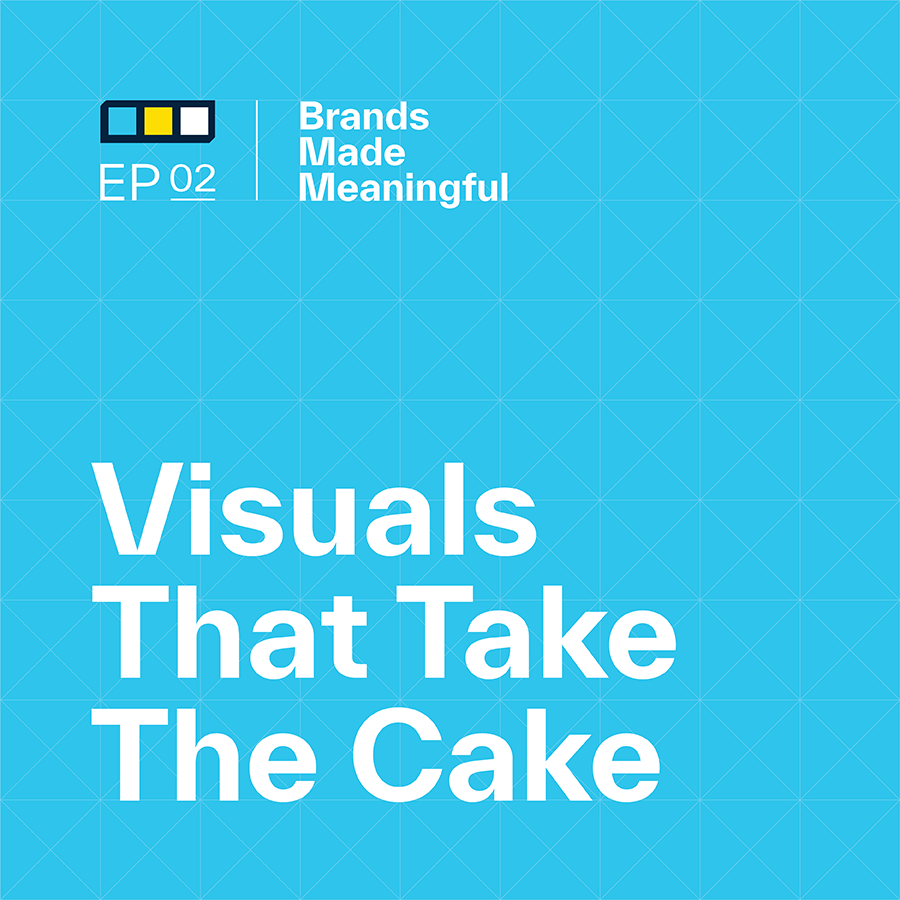EPISODE 19

What is a Brand?
Episode 19
Derek and Tucker discuss what defines a brand and what makes them successful.
EPISODE TRANSCRIPTION
Today we’re talking about brands and what makes them successful.
Derek Tucker, I’m surprised that we haven’t had this conversation yet that the title of our podcast is called Brands Made Meaningful.
Tucker I think it’s easy for us to get into other topics because we just assume people know.
Expand Full Transcript
Derek We use brands made meaningful as the tagline for our business.
Tucker Yeah.
Derek But we haven’t talked about brand.
Tucker And this came up in a meeting we had this week with a client. And the challenge they’re having is not that they don’t know brand, and that their audience, as in their internal teams, don’t understand brand. And the challenge that they’re coming back to us with is how to explain brand to them and how to use their brand for the better to help them grow the business in the long term.
Derek The words in the creative industry – design, marketing, advertising, branding – the word brand gets used all the time. And it gets used so often that I think that there’s a lack of clarity. There’s a lack of a commonly understood definition of what brand is. Much like some people think a mission is one thing and a vision is something else. There really is a definition. At least here we have a definition of what we believe a brand is. So we thought it’s probably long overdue in our 19th, 20th conversation now to talk this out and to talk about brand, maybe branding to a certain extent, but to really bring some clarity around what this five-letter word is.
Tucker Let’s get into it. So how I define brand and how a lot of people define brand in our industry is what people think of you in the most simple, simple form. We call it your perception. Or other people call it the gut feeling people have when they think of you. And I think that’s an easy way to think of it. But it’s still so ethereal, so up in the air. It’s like, okay, so people think of you in a certain way. When I started in the industry, I thought brand was the equivalent of organization, like your brand is your organization. And that’s an interesting way to start thinking about it. I think that’s how a lot of our clients come into the conversation, but that’s not necessarily true. So if you think about brand as someone’s gut feeling about you, then you’re thinking your brand is affected by almost everything. So everything can and most likely will affect your brand. When I’m talking about that, I’m talking about experiences and experiences of the products you sell. Like when someone uses your product, what kind of experience do they come back with? That affects your brand. That affects the way people think about you. What about your services, like your customer service? That directly makes people think either positively or negatively or otherwise of you and I have a whole list of these and we can go through them.
Derek But it’s a paradigm shift. When you shift the brand, when you define brand as perception or someone’s perception of you or your products or services, the experience of working with you, that means your customer owns your brand. It’s not what you say you are. You need to know who you are. You need to know what you stand for. But when it comes to your brand, it’s how other people define you.
Tucker Exactly. And that’s a really hard thing to think of. I think it’s Marty Neumeier who says you don’t own your brand, your customers own your brand. And that’s a really interesting way to think about it.
Derek And he also said if your brand is a strong brand, it’s because everyone else has a good perception of you.
Tucker I agree. But we also need to put it in the context of you don’t own your brand, your customers own your brand. Maybe that’s true. But it’s not just your customers, your employees own your brand. Your leadership, your investors, all these people own your brand. If you think of your brand as the only people you’re trying to satisfy are your customers, then you’re going to be in a difficult position with other audiences that really need you to have a great brand too.
Derek What a brand is not is your logo. We mentioned this a little bit. I think it was episode ten. We had a conversation about are brands logos. We focused in that conversation on dispelling that myth, the creative myth, that the logo and its symbol is your brand and it’s not. Your logo is important. But check out episode ten for a whole conversation about why that isn’t a brand as we now shift to what a brand is in this conversation.
Tucker When we get into our work, whether it’s developing taglines or logos or helping people design their website or brochures or any kind of touchpoint or experience, we think of the tools of our work as the logos, the taglines, all those pieces. Those are tools to us. When we give someone a brand book, we can also call it a brand tool kit. That’s a common word that we use for people. That just means that there are assets in there or tools in there to help us craft that perception.
Derek So what you’re talking about is the difference between brand and branding. Branding is that active, intentional practice of crafting, creating, writing, designing, etc.
Tucker So if you look at brand as someone’s perception or someone’s gut feeling about you, then what we do as a branding firm is we influence what people think of you.
Derek I would also say that in the branding work that we do, our goal is to create and to deliver value. For the brand.
Tucker It depends on the project. Since we have a wide berth of capabilities, we can really come in at any level. But we’ve had clients where we come in at the very front to build out the strategy of the brand. How do we want to be perceived? How can we best move our brand and our company forward all the way down to, hey, we already have a perception we really like? We know what we want to be seen as and this is how we are seen. What can we do with this brochure for a specific example? What can we do here to make that connect? So I think we see a lot of different sides. But when you think of branding in general, it’s interesting to say branding is the act of altering your perception in the marketplace to better guide it where you want to go, or it’s the difference between who you want to be thought of and who you are actually thought of. And branding is the act of trying to move that needle forward.
Derek Someone described that as a dialog. Not a monologue. We’re not preaching – we’re interacting and engaging.
Tucker Validation is a really big part of this work. It’s to put something out there, hear what comes back and put something else out there. It’s that dialog. It’s definitely not a monologue. This is not, we’re going to tell them what we want to tell them and they’re going to believe us and that’s okay and we’ll move forward. That’s rarely the case. As we move forward, it’s interesting to say, how can we think more forwardly about that? We can get into what that means.
Derek There are a couple of other voices in the creative community, outstanding voices that have chimed in on what is a brand and what their definition of brand and branding is. There are a couple of notable ones. This is interesting. So bear with me here for a second.
Tucker I’ll try.
Derek Harry Beckwith is an author that wrote a great book called Selling the Invisible, which, to a certain extent, is what branding is. It’s ethereal. And at the beginning it’s intangible. It’s hard to grasp what all this is. It can be a little murky what it is that we’re talking about before it manifests itself into the creative tactic, the real touch points where that comes to life. Harry Beckwith, in that book, said that a brand in the public’s eye is a warranty and it’s a promise, and that building your brand builds that promise. Which is interesting because then Seth Godin in his book, This Is Marketing, said the same thing. He said a brand is our mental shorthand for the promise that you make. But Marty Neumeier expanded on that in his book called The Brand Gap, and he brought in a different point of view and actually said, to an organization’s CEO, it can be true that a brand can be a promise. But in his mind or from his perspective, that’s not a helpful definition and a brand can’t just be a promise on its own because then it’s implied. If it’s not explicit, it’s not a crystal-clear definition. And most importantly, that promise is coming from the organization. It’s coming from the brand. It’s not coming from your tribe. It’s not coming from your customer or your employees or your partners. Which what Marty is saying is by only calling a brand of promise, you’re not taking the dialog and the concept of that. Your brand is defined by other people’s perceptions of you, not only your own intentional assets.
Tucker It’s not a monologue like we said. If you’re still listening, it can become very confusing. Everything that you just said, I follow it great because I know exactly what you’re talking about. But I can see how our customers, our clients, are like, how are we supposed to explain this to our audience internally? That’s why it’s not as easy as saying, hey, do this. Every person inside and outside your organization affects your brand and they need to know how to use it. They need to know what they’re doing right, what they’re doing wrong. And the better informed those people are, the better they’re going to be at building this thing, because your brand is really an asset for you. It’s an intangible asset for you to grow the value of your business, whether it’s big or small, it doesn’t matter. And so when we get into our work, it’s really important that you understand we know what we’re doing, but it’s also really important that you understand how it affects you. There’s almost something that makes me worried when I see people doing work, not at our organization, but at other agencies, where they just give them fantastic work and fantastic strategy and fantastic creative, but they don’t give them the tools to say, this is how you use it and this is how it moves forward. So when we get through a branding project, our main goal is that you understand how to use it and that you don’t have to come to us every single time you have a question because it’s so intuitive for you. It doesn’t need to be this ethereal thing that you’re just not understanding.
Derek Here’s a more crystal-clear definition of brand branding. This is kind of a typical industry model. You found this online. And we won’t go into the super nitty gritty details of this, but maybe this brings a little bit of clarity to this. When it comes to branding, typically there are four components, four phases, at a high level. The first one is your own organization’s strategy, what your company was built on in the first place, your culture, your operations, your products, what it is that you do. You and I here at Sussner, with our team, that’s usually, other than some cultural components, most of that work, that’s you, that’s on the visionary and the integrator of a business that built a business.
Tucker Sometimes we get brought in at that level to say think about this in a different way. We’re working with the client right now. We won’t say names, but they’re asking us to come in at this foundational level.
Derek Because they’re stuck and they’re struggling. And they’re having a hard time seeing it because they’re so close to it. And they’ve gone through some dramatic changes, changes in philosophy and direction, in leadership. So now they need some help articulating that. The second piece is brand architecture, which is simply the structure that organizes your products and service lines. It’s the relationships between all the various brands or subbrands within your organization.
Tucker And it’s not just products and services. It could be initiatives or programs or anything. I mean, we use products and services as a blanket statement, but when we think of architecture, it’s how do all these things roll out into audiences? At what point do we start bridging the gap between what we do and who we serve, and how does that all come together? So when we think of architecture, it’s easy to go, okay, here’s a product and a product and a product and a product. But those products might have different levels to them and how the audience’s all fit. So there’s a little more complexity in that than I think people lead on.
Derek I’m going to jump ahead to the fourth phase. The fourth phase is brand activation. This is where all the stuff gets created, all the tangible tech, tactical touch points. You rattled off a bunch – advertising, promotion, marketing. That’s where all the stuff gets created. But that third step is the brand creation phase, which is where most of our work lands. This is what we would refer to as foundational branding, verbal branding, visual branding, the designing of your story, your messaging, and your look. But all of that has to be rooted in who you are.
Tucker It’s about crafting the toolkit to help you activate this. It’s building this toolkit to then bring that brand to the audiences that it needs to be brought to. So like you said, that could be logos, that could be style, that could be names. When you think about the architecture, just because you have a great business and a great business plan and a great organizational structure, it doesn’t necessarily mean you have a name in place yet or you have any of that stuff in place yet. This is not how you build a company, this is how you build a brand. When we come into that, we definitely start with the architecture before we get into the name, and I think that throws a lot of people off. We always need to look at, what does this need to be and who does it need to be for and what can we do now and what do we have to do to be the right company? Then we get into, what’s the logo, what’s the name, what’s the color, what’s all that other stuff.
Derek And I think we get into we can get into that in another conversation. We can really dive into the nitty gritty about, specifically, how does a brand manifest itself? I think we could absolutely talk about that. But at least what I wanted to do was provide some tangible benchmarks that say if a brand’s not a logo and if a brand is perception, what does that mean? It means that you have products and services and organizational structure. You have a way of organizing all of those things that you do to then help you tell the story and to be intentional about how that story is told so that you have a hand, as much as possible, in crafting what your public perception is and how people think of you.
Tucker So almost every brand project we have has the statement, let’s back up for a second inside of that and then just do quotes around that. But there are so many times where we come in and they’re like, Hey, we need a name. And we go, all right, let’s back up for a second. Where are we here? Or, we need a new logo. And we’d be like, all right, hold on, back up. Where are we at? And I think that most of the people we work with don’t realize this or maybe they’re just eager, but they like to get right into it before understanding the whole landscape. And I know that this is a rabbit hole. I told Derek before we started this that if there was going to be a logo for this episode of the podcast, it would be a rabbit hole. And then we started talking about what a rabbit hole would look like. So then that got into a different rabbit hole. So let’s cut that and move back – to brand. So when we think of brand, and I’m going to just spend some time here so that people who are still listening can say, here are all the things that your brand can be affected by. Just so you know. I’m going to get into it. So as I was with you, now you have to be with me on this. So when I say everything can and most likely will affect your brand, and it’s rooted in the experiences that people have when involved with you. Not your experiences every time, but experiences that are involved with you. The more touchpoints your brand has, the more complex this Is going to get. So first is products, what you sell, the experience of using that product, buying that product, all those different things that go into your products and experiences. How does that affect your brand? Then we go into services, that’s customer services, post-purchase services, professional services. Then you get into the creative experiences. So that could be visuals, verbals, the way that people open a brochure and they see it a certain way. People scroll through your website and they have a certain experience. What does it say and what does it look like and what is it read like and what’s the tone? That’s all an experience, right? Then we get into your marketing experience. When you interrupt their day with something, whether it’s an advertisement or a direct mail piece or anything like that, how does that make them feel? What’s the experience that they get there? Then we get into the more complex things. So that’s all pretty basic. Then we get into your partners. Who are you partnered with? Because now you’re almost co-branding with them. What is their brand? And their brand affects your brand because any of their perceptions rub off on your perception and vice versa. So you need to be more strategic in the way that you’re thinking about who you’re partnering with. Same goes for sponsors. If you’re a big organization and you have sponsors, whoever your sponsor is or whoever gets to use your likeness or your brand is altering your brand’s perception. We had this conversation a couple of days ago about one of our clients talking about sponsors and how we need to be more strategic on sponsorships because they’re changing our perception without our say. That’s dangerous. And then we get into initiatives. When you have initiatives internally or externally, people see those initiatives. What does that make you think like? That’s a long list of things you need to be aware of. That becomes overwhelming for all these people. So not one person can be in charge of everything. I think most brands we work with have a “brand police”.
Derek Brand manager.
Tucker The department’s not big enough to have a brand police or a brand manager as one person. There is a person that guides that and explains that, but almost every person in your organization is probably a part of that brand managerial staff. And that changes the mindset a little bit to say, hey, you in accounting, you do affect the brand in a certain way, just so you know. So you need to be aware of the type of perception we’re trying to keep up because then that’ll make the books look better next year. And how do we move that forward and how do we explain brand on a more accessible standpoint? It can’t just be for the creative department to sit up in their designer chairs and think about it and craft it and then tell everybody what to do, because that’s not how it works anymore. So it’s interesting when you think of brand in the past, a brand now, brand used to be – here are the rules, stick to them. Brand now are a constantly changing evolution of our perception. We need to constantly be thinking about how that affects ourselves.
Derek I think everybody in the company is the brand. Because everybody, even if they don’t interact or interface with consumers or customers or partners or vendors, they could be on a manufacturing floor. If they’re doing their job right and they’re delivering and exceeding expectations, they are then reinforcing the brand.
Tucker We’ve worked with a handful of sports organizations, professional sports-oriented organizations. And the thing that comes to my mind that makes it like, oh, okay, it’s not that far out are fans that you have affect the perception of your own brand. If you think about the fan interacting with a different fan base, they’re affecting how people think of your team because that person is interacting a certain way. You have no control over that. And think about that. You can’t control everything. But it becomes a bigger world where you get a little bit more knowledgeable about what’s possible and what’s not. And so your job, whether you are the brand manager, whether you’re the CMO, whether you’re just the leader who’s in charge of this, your job is to articulate what you want people to think of you as. And that’s a hard job. It sounds easy, but it’s difficult. And then you need to hold everything up against that.
Derek Creative messaging, the experience, the product. Like you just said, if the product fails, if the product malfunctions, that affects the brand. We used to do a lot of work with McDavid Sporting Goods Company and they had a handful of endorsed athletes. So much like the sponsorship, they went to great lengths to make sure that these athletes who they were going to pay to endorse their product, they had to make sure that those athletes were in cultural alignment with what McDavid was working really hard to stand for. And they did a great job of it. They were very selective.
Tucker And the question that most people come back with is, okay, great. I know I have all these things. I know that my brand is X, Y or Z. I know it’s my perception. So how do I move that needle forward? And we would say that you need to define that perception. We call them brand attributes. We call them characteristics. Some people call it your brand essence. Some people call it other things. But it’s the 3 to 5 words that summarize how you need to be thought of in your market, by your employees, by all those audiences that I said. If you can define those words to say we are X, Y and Z and hold every initiative, product and everything up to that to say, is this product meeting that perception, is this service meeting that perception, and if not, how do we get it there? That’s what you do.
Derek And these are words that you want to be perceived because you believe that if you are perceived this way by your customers, by your tribe, by your audience, by your employees, that that is going to help you be more successful in what you do.
Tucker Exactly. And if we remember the definition of branding being who you want to be seen as to who you are seen as. And it’s the working in between that, how do we make people think the way we want them to think? And that’s what we do. It’s very, like you said, ethereal. it’s very emotional, in the way that people deal with some of the stuff. So it’s quite a complex problem.
Derek One way to think about these brand attributes or words that help describe your perception is to lay them alongside your core values. Many organizations have defined their core values, and oftentimes those core values are an internal guide. I think the brand perception is also internal, but it’s also a stronger leaning external. By external, that also means your employees. But it’s that it leans harder. If the core values are more about your culture, your brand attributes and your brand perception are the more aspirational words that help describe your organization and your brand.
Tucker We should do an episode about crafting a brand’s perception. And I know that’s branding in general, but it’s like, how do you identify the 3 to 5 words? So make a note on that. And then the last thing I want to talk about is so you have this perception identified, defined, and you have what you’re doing. What’s that next step? How do you roll it out to people? And, like I said, I think it’s building out this story of why you got there and how this is going to move the organization forward. Because people in their roles would rather have an understanding of what you’re going for, why you’re going for that, and how it’s going to affect them moving forward. If you can build out, whether it’s a presentation, whether that’s a book, whether it’s even just a memo, I have no idea how it works best for your organization. We’ve done it in a million different ways. But if you can build out something to say, hey, I know this isn’t your job, but when you interact with people, we’re trying to do X, Y and Z and that’s going to help us move the company forward.
Derek Brands that are really, really successful, that have become irreplaceable and uncopyable in the minds of consumers, examples that come to mind are Apple, Target, and Starbucks. They go to great lengths, and this is just from an outsider’s or a customer’s perspective. I don’t have access to their brand style guides and brand books or the brand conversations, but based on the work that we do and my interactions with companies like that, I’m under the assumption that they go to great lengths to help every single person inside that organization understand not only what they want that brand to stand for, but what that person can do specifically within their role to reinforce that brand perception. Even to small things like Chick-Fil-A in the greetings or saying hi or looking somebody in the eye. It sounds more complex than it is, but you literally could look at every single person in your organization and say, with respect to what that person does, what’s one thing that they can do to reinforce our brand.
Tucker The easiest way that I’ve heard it explained and that I’ve helped explain this to people, is that you are now a part of a family. When you do something in real life and it’s positive or negative and it’s associated with your family – let’s think about in high school or something like that – you would do something and it would affect your family’s image. It would affect that thought of your family in this small town. That’s an easy way for some people to go, okay, I get it. Now that I work here, I’m a part of this “family” that if I do something with customers or even other employees, I’m either harming or embracing that brand that we’re trying to create. And that becomes easier for some people to start thinking about it like that.
Derek And what you don’t do is also doing something – so not smiling, not engaging, to just be sort of neutral. There’s a famous Rush quote, one of my favorite bands, that says, Choosing not to decide is still making a choice. So clearly the way that this has done well is through positive, motivating, inspirational ways. I’m from a small town, so you kind of struck a nerve. So I totally get with that, with that vibe slightly. And instead of telling everybody what not to do so that you don’t make our brand look bad, I think the focus is on, here are a couple, two or three things that you can do that are relatively simple and accessible that are going to reinforce our brand and its strength and its value, its memorability. And what this is, is being intentional. We talk about being meaningful, purposeful, thoughtful, intentional. If you don’t do this, if you don’t decide to choose to define your brand and what it is that will reinforce that brand, like we defined upfront, if your brand is what other people think of you, then they are going to define your brand. They’re already defining your brand, but you have a hand in how that definition plays out – a strong one.
Tucker I can see brand being overwhelming for someone who’s just getting into it, for someone who has now been tasked to be the head of brand. I know a lot of large organizations. You’ve worked up the ranks and you totally understand this. And this is like, yeah, day one, 101 stuff. I totally get it. For other people who’ve been doing this for a long time, they go, oh man, you’re right, this is a lot. There are a lot of touchpoints, and the only way you can move it forward is by doing one thing at a time, helping people understand, helping people move it forward, and just explaining what the vision is for the company is a really great way to start.
Derek The takeaway that I would share with people – one, is read Marty Neumeier’s book The Brand Gap. I think it’s been around for 15 or so years and I read it just recently.
Tucker It’s a quick read. It’s not overwhelming. It’s pretty simple.
Derek It brings a ton of clarity from a man who’s been in the industry for a long time as a designer, a brand strategist, author, publisher, educator. But he talks in The Brand Gap about three things to focus on that will help you with your brand and which will also help you differentiate your brand in this positive way. And he lists three questions to be able to answer. One – who are you? Two – what do you do or what is your business? So to be able to define those two things, and there’s a deeper conversation around how do you get to who are you and what do you stand for? But the third one, the one that resonated with me that a lot of people forget to ask, is why does it matter?
Tucker Why do you care?
Derek What’s in it for me? When I think of your brand, what’s in it for me? And why should I give a damn?
Tucker This is where a bunch of four-letter words would fit in. When you think of brand, it’s why do I care if you have this perception, why should I care about that perception? That’s almost another great topic to have a whole 30-minute conversation on – why people do things.
Derek So I think about that. I’d love to leave you with that thought until next time. Why does it matter? Sussner is a branding firm specializing in helping companies make a meaningful mark, guiding marketing leaders who are working to make their brand communicate better, stand out and engage audiences to grow their business. For more on Sussner, visit Sussner.com.
More Episodes Like This
Building Brand GuidelinesEpisode 65
Derek and Tucker show us how to build infrastructure guidelines to unify your brand experience across the board.
Club Identity SystemsEpisode 64
Derek and Tucker cover what Identity Systems entail and how to discern between internal and external methodologies.
Navigating Branding With a BoardEpisode 63
Derek and Tucker bring clarity to uniting your company under one cohesive vision.
Putting a Committee TogetherEpisode 62
Derek and Tucker assemble your need-to-know facts when putting together your committee.
The Guiding Principles of Private ClubsEpisode 61
Derek and Tucker go over the top ways private clubs can find the balance between pleasing old members while attracting new ones, all while making moves towards the future.
How Color Affects PerceptionEpisode 60
Derek and Tucker cover how to best convey your business with color.
Brand EcosystemsEpisode 59
Derek and Tucker break down how to craft effortless experiences when considering your brand as a whole.
6 Types of Brand TransformationEpisode 58
Derek and Tucker dive into 6 distinct types of transformations for a wide range of brands.
Tournament Branding For ClubsEpisode 57
Derek and Tucker discuss designing and delighting your club members with tailored events.
Brand Promoters & DetractorsEpisode 56
Derek and Tucker discuss how high level promoters increase your NPS and how to turn the tides on your detractors.
The Loudest Voices in the RoomEpisode 55
Derek and Tucker talk about gathering feedback while prioritizing every voice.
Determining A Primary AudienceEpisode 54
Derek and Tucker discuss if and when you should be honing in on your audience vs. casting as wide a net as possible.
Branding For ExclusivityEpisode 53
Derek and Tucker discuss the intricate process of naming your brand.
Measuring Brand SuccessEpisode 52
Derek and Tucker discuss how we measure our success in branding and a few key KPIs that help us understand our impact.
Branding For ExclusivityEpisode 51
Derek and Tucker breakdown how brands can create the perception that they are exclusive and only for a certain type of consumer.
What Makes A Brand SurprisingEpisode 50
Derek and Tucker break down the Sussner formula that we believe leads to a surprising brand.
Breathe Life Into Brand TraditionEpisode 49
Derek and Tucker discuss the intricacies and common pitfalls of branding for Private Golf Clubs.
They Key of Visual DifferentiationEpisode 48
Derek and Tucker break down the importance of differentiating your brand on a visual level.
Branding For Private GolfEpisode 47
Derek and Tucker discuss the intricacies and common pitfalls of branding for Private Golf Clubs.
Dealing With An Identity CrisisEpisode 46
Derek and Tucker breakdown how to identify and remedy a brand's identity crisis throughout thoughtful and intentional brand management.
Branding vs MarketingEpisode 45
Derek and Tucker discuss the differences between Branding and Marketing and how to make the two compliment each other.
Build Your Brand's FoundationEpisode 44
A brand's foundation is a critical element in being successful in the long-term.
Building a Constructive Branding ProcessEpisode 43
Derek and Tucker break down the steps required to build the most constructive and meaningful branding process.
What Makes a Brand Relevant?Episode 42
Relevance is a key piece of a brand's identity for creating clarity and connection.
Your Right to WinEpisode 41
Derek and Tucker discuss the “Right to Win” and the odds of your brand's success within your target market.
An Intro to Sub BrandingEpisode 40
Derek and Tucker discuss the nuances of developing sub-branding and strategies.
Conquer Branding FearsEpisode 39
Derek and Tucker dive into how to overcome the fear of change and the nature of constant refinement of your brand.
Balancing Strategy & DesignEpisode 38
Great strategy is a necessary foundation for great design—and great design brings great strategy to life.
Branding PrioritiesEpisode 37
Branding priorities are the actions and initiatives that shape or enhance a brand's identity, perception, and market position.
Invest in Your BrandEpisode 36
Investing in your brand benefits your company as a competitor in the marketplace, builds trust with customers, increases perception of quality, and drives employee engagement.
Why is Positioning Scary?Episode 35
Narrowing the brand's position is really a strategic decision to focus the brand's offerings, messaging and target audience on a specific niche or segment within the market.
What Are Brand Consultants?Episode 34
Derek and Tucker discuss the importance of hiring expertise with a wider breadth of knowledge than just visuals.
Hire for Brand FitEpisode 33
Hiring people that fit your brand is key in order to maintain brand authenticity, positive culture, and consistent messaging.
Your Brand’s Stance MattersEpisode 32
Your stance can help define your brand from a core level and make branding, hiring, and marketing not only easier, but more meaningful.
Levels of Executing a Brand RefreshEpisode 31
If you have a brand strategy in place, how do you execute it?
The Role of Features & BenefitsEpisode 30
Derek and Tucker discuss the importance of features and benefits within the context of branding, selling, and marketing your products and services.
Should You Listen To or Lead Your Customers?Episode 29
Within the challenge of any rebrand is the challenge of managing customers' perception of change.
Managing a Brand TransformationEpisode 28
Episode 28 discusses the highlights and challenges of rolling out a new brand, both internally and externally.
Living Your BrandEpisode 27
Your brand is not this shiny trophy on the shelf. It is something that you are molding every single day.
What Makes a Brand Authentic?Episode 26
Season 2 starts off with a discussion about building authentic brand experiences, both internally and externally.
Reviewing your Competition's CreativeEpisode 25
Derek and Tucker discuss the process of reviewing your competitors' creative strategy to better position your brand within the market.
Interviewing your Audience for InsightsEpisode 24
This episode details the process and benefits of interviewing your audience as part of the branding process.
Assumption ReversalEpisode 23
Derek and Tucker discuss how we change our thoughts and get into a different mindset to refine and revise our branding.
Developing vs. Amplifying a BrandEpisode 22
Another way to say it is, development is building and crafting your brand story, and amplification is then telling it.
Refreshing a Sporting Goods BrandEpisode 21
This episode shares the steps behind Sussner’s work in refining the Shock Doctor brand.
Defining PerceptionEpisode 20
Derek and Tucker discuss the positive and negative impacts of brand perception.
What is a Brand?Episode 19
Derek and Tucker discuss what defines a brand and what makes them successful.
Branding Golf Courses vs Golf ClubsEpisode 18
Derek and Tucker further hone in on golf course design.
Refreshing a Golf CourseEpisode 17
Derek and Tucker discuss the bar for golf course design – and how to push past it.
Let’s Talk Taglines Episode 16
Derek and Tucker talk taglines in today's episode.
Refreshing an Athletic DepartmentEpisode 15
Derek and Tucker sit down today to discuss what logos mean within branding.
Branding a Club Episode 14
Derek and Tucker discuss how to brainstorm branding a club.
An Intro to Internal Branding Episode 13
Derek and Tucker discuss the power behind internal branding.
The Value of Stereotyping Episode 12
Derek and Tucker sit down today to discuss the meaning of stereotyping within the branding world.
We’re on a Mission Episode 11
This episode digs into the rallying cry for the greatness your team is going to accomplish.
Aren’t Brands Just Logos? Episode 10
Derek and Tucker sit down today to discuss what logos mean within branding.
The Business You Are Really In Episode 09
Derek and Tucker sit down today to discuss how to discover what business you are really in to better understand your mission statement.
Clarity of Vision Episode 08
Derek and Tucker discuss the importance of looking ahead towards the big picture to better hone the purpose behind what we do in the now.
Branding B-2-B Environments Episode 07
Derek and Tucker discuss the Branding of Spaces.
It’s All in the Name Episode 06
Derek and Tucker discuss what a name can say - and not - about your company.
Delving Into Branding Data Episode 05
Derek and Tucker jump into the discovery phase of branding before it hits the drawing board.
Content Made Meaningful Episode 04
Today Derek and Tucker discuss the concepts within content and its common misconceptions such as the phrase "Content is King."
Brand Story vs. Brand Messaging Episode 03
Your story matters.
Visuals That Take The Cake Episode 02
Derek and Tucker sit down to discuss visual impact and what that could mean for your brand.
Are You Different or Distinct? Episode 01
It's not about being the only option, it's about being the right option. Join Derek and Tucker as they discuss Differentiation & Distinction.



